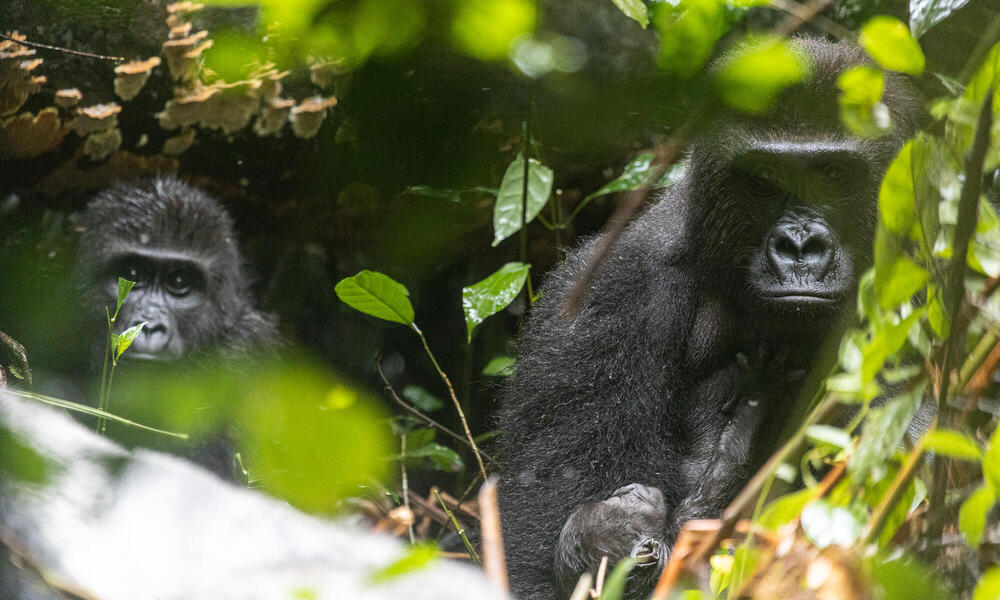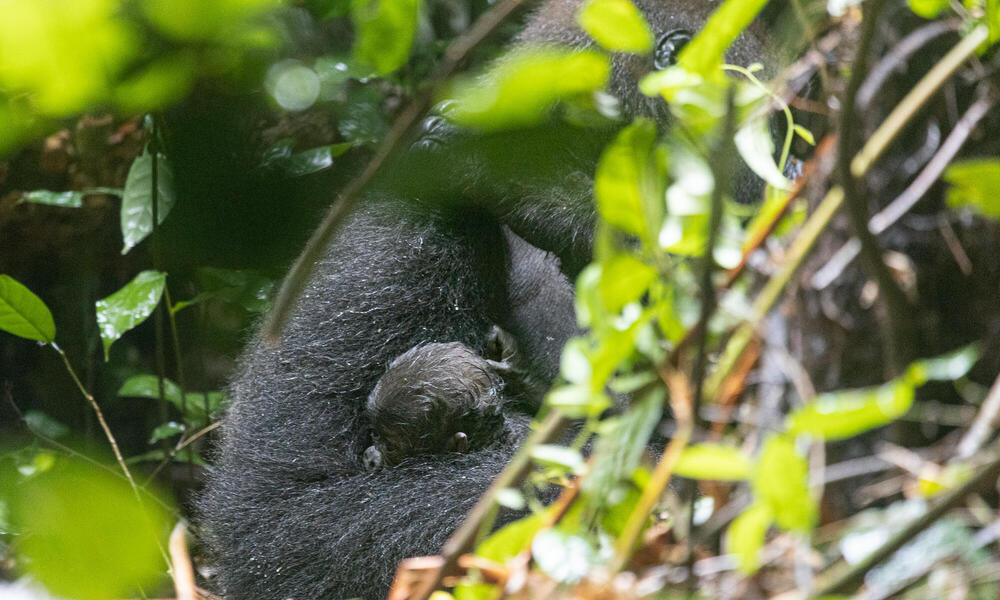Meanwhile, experts spotted a large presence of elephant calves under the age of one in the Dzanga bai, the most impressive among the many unique forest clearings in the Congo Basin that forest elephants frequent in search of mineral-rich mud and to socialize. The babies submerged in water, rolled in mud, and nuzzled their mothers.
These sightings—both the gorilla and elephants—show the importance of well-managed protected areas to the long-term survival of wildlife. Forest elephants are experiencing a population collapse throughout central Africa, so these births are of particular importance to their conservation. WWF has co-managed Dzanga-Sangha with the Central African Republic government since 1989, undertaking research on elephant movement using satellite collars, supporting research in the area, and habituating gorillas, among other crucial activities.
As well as being rich with biodiversity, the Dzanga-Sangha is also a culturally diverse area, home to nearly 150 distinct ethnic groups including the Ba’Aka people. It’s also a model for holistic and inclusive conservation where WWF works with the government, Ba’Aka people, and other community stakeholders to protect wildlife in this area, while also supporting and improving the livelihoods of Indigenous peoples and local communities.
Ecotourism serves as an important source of income, so these recent sightings of elephant calves and a newborn gorilla provide hopeful signs of healthy wildlife populations that will support this important livelihood.
Get a closer look at this new life below and learn more about WWF’s work on gorillas and forest elephants.

